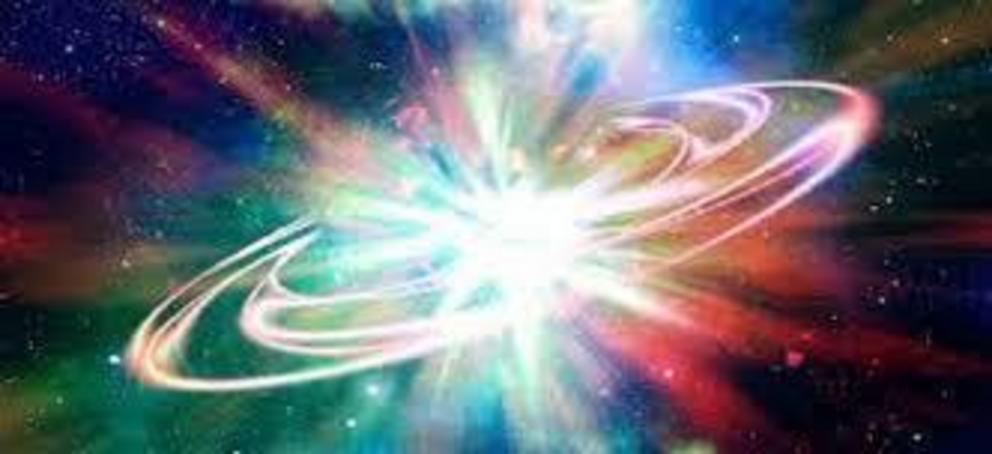Largest structure ever found in the early universe is one million, billion times more massive than the sun
Astronomers have discovered an enormous structure in the distant universe thought to be one million, billion times more massive than the sun.
The huge object, dubbed Hyperion, is a proto-supercluster of galaxies that formed just 2.3 billion years after the Big Bang, when the universe was still young.
Experts say the find is surprising given Hyperion’s staggering mass and size at such an early point in the universe’s history.

Astronomers have discovered an enormous structure in the distant universe thought to be one million, billion times more massive than the sun. The huge object, dubbed Hyperion, is a proto-supercluster of galaxies that formed just 2.3 billion years after the Big Bang, when the universe was still young
The gigantic proto-supercluster was found using the VIMOS instrument on ESO’s Very Large Telescope.
According to the team behind the discovery, it’s the largest and most massive structure known from this early in the universe.
‘This is the first time that such a large structure has been identified at such a high redshift, just over 2 billion years after the Big Bang,’ said first author Olga Cucciati.
‘Normally these kinds of structures are known at lower redshifts, which means when the Universe has had much more time to evolve and construct such huge things.
‘It was a surprise to see something this evolved when the Universe was relatively young.’
Hyperion sits in the constellation Sextans, and is said to have a complex structure that differentiates it from nearby superclusters of similar size.
It’s home to at least 7 high-density regions connected by filaments of galaxies, according to the researchers.
‘Superclusters closer to Earth tend to a much more concentrated distribution of mass with clear structural features,’ says Brian Lemaux, an astronomer from University of California, Davis and LAM.
‘But in Hyperion, the mass is distributed much more uniformly in a series of connected blobs, populated by loose associations of galaxies.’
Astronomers suspect Hyperion’s unusual structure may be related to its emergence at a time when the universe was still very young.

The gigantic proto-supercluster was found using the VIMOS instrument on ESO’s Very Large Telescope. According to the team behind the discovery, it’s the largest and most massive structure known from this early in the universe. It's located within the COSMOS field (above)
TELESCOPE SET TO GLIMPSE THE FIRST GALAXIES IN THE UNIVERSE
The James Webb Telescope has been described as a 'time machine' that could help unravel the secrets of our universe.
It is set to be 100 times more potent than its predecessor, Hubble, and three times larger. For this reason, it has been nicknamed 'Super Hubble.'
The telescope will be used to look back to the first galaxies born in the early universe more than 13.5 billion years ago, and observe the sources of stars, exoplanets, and even the moons and planets of our solar system.
When it is launched in 2018, it will be the world's biggest and most powerful telescope, capable of peering back 200 million years after the Big Bang.
Webb's primary mirror will collect light for the observatory in the scientific quest to better understand our solar system and beyond.
Unprecedented infrared sensitivity will help astronomers to compare the faintest, earliest galaxies to today's grand spirals and ellipticals, helping us to understand how galaxies assemble over billions of years.
Webb will see behind cosmic dust clouds to see where stars and planetary systems are being born.
It will also help reveal information about atmospheres of planets outside our solar system, and perhaps even find signs of the building blocks of life elsewhere in the universe.
While the other nearby clusters had billions of years for gravity to pull matter closer together, the process has taken place over a much shorter time in Hyperion.
The researchers say it may evolve into a structure similar to other large objects seen in the local universe, such as the superclusters in the Sloan Great Wall or the Virgo Supercluster, which contains the Milky Way.
‘Understanding Hyperion and how it compares to similar recent structures can give insights into how the universe developed in the past and will evolve into the future, and allows us the opportunity to challenge some models of supercluster formation.,’ Cucciati said.
‘Unearthing this cosmic titan helps uncover the history of these large-scale structures.’
For full references please use source link below.
Video can be accessed at source link below.

